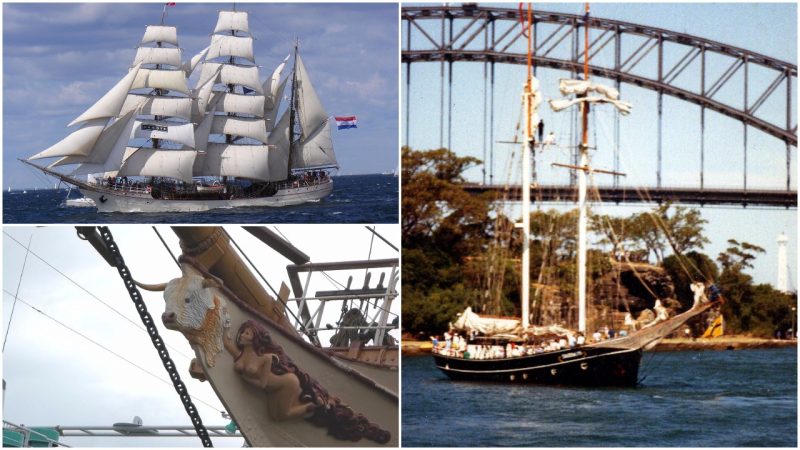The Netherlands is not all about tulips and windmills. Nor is it all about the famous painter Vincent Van Gogh.
No, a telling of the history of this small but powerful European country would be nothing without its glorious past of traversing the open seas, of its navy, and its beautiful tall ships that have been circumnavigating the globe for centuries.
#1 Stad Amsterdam
Throughout their history, despite the majority of clippers having sailed under British or American flags, hundreds of them were built in the Netherlands. The Stad Amsterdam (which literally means “City of Amsterdam”) is a three-masted clipper built at the Damen Shipyard of Amsterdam, but much more recently than most, in 2000. Designed by Gerard Dijkstra, the ship is based on the mid 19th-century frigate Amsterdam, although it is not its exact replica. According to the ship owners, Stad Amsterdam is a “modern extreme clipper in historical perspective”. Though modern means and technology were applied in the ship’s construction, this beauty still preserves the clipper’s classic “look and feel”.
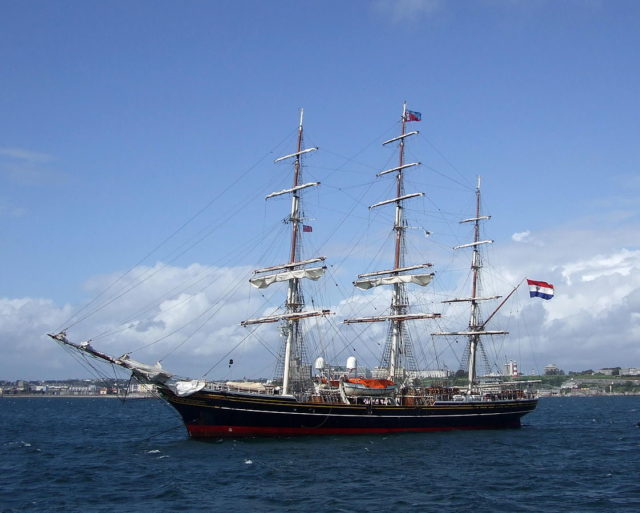
In September 2009, Stad Amsterdam was equipped to accommodate a research expedition that aired on television. The expedition followed the traces of the second voyage of HMS Beagle in the 19th century. The Beagle had sailed across the Atlantic, and on its voyage, it conducted an in-depth survey of the southern coast of South America. On board, the crew was joined by Charles Darwin who had fulfilled an unpaid position as a naturalist.
The Beagle had returned to Europe via Tahiti and Australia. Although its original expedition was planned to last for two years, it took almost five, from 1831 until 1835. Stad Amsterdam needed about eight months to cruise the same course and the collected information enabled an amusing comparison among the new observations and those of Darwin. Pretty cool, right?
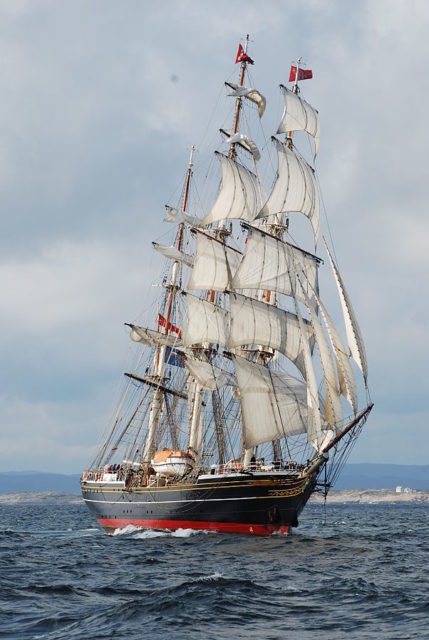
In more ordinary days, Stad Amsterdam is used for training and also serves as a charter ship for guests. Her home port is Amsterdam and the crew is a mixture of Dutch and Danish. A very fast ship, she has won the 2001 Cutty Sark Tall Ships’ Race and was also present at the SAIL Amsterdam 2015 celebrating her 15th birthday with dozens of other tall ships.
#2 Europa
A steel-hulled bark, and originally a German lightship, Europa was first named Senator Brockes. Built in 1911 at a shipyard in Hamburg, this ship served as a lightship on the river Elbe and was under the command of the German Federal Coast Guard. The vessel was then bought by a Dutchman in 1985 and by 1994 she was fully restored into a beautiful three-mast rigged tall ship.
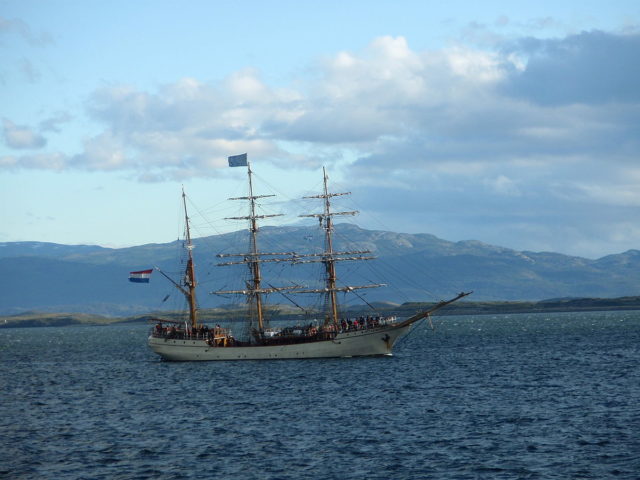
In its full retro splendor, Europa today cruises worldwide and accepts trainees to develop their sailing skills. The vessel embarks on annual trips to Antarctica.
It also voyages out between South Georgia and Cape Town via the world’s most remote inhabited archipelago, Tristan da Cunha.
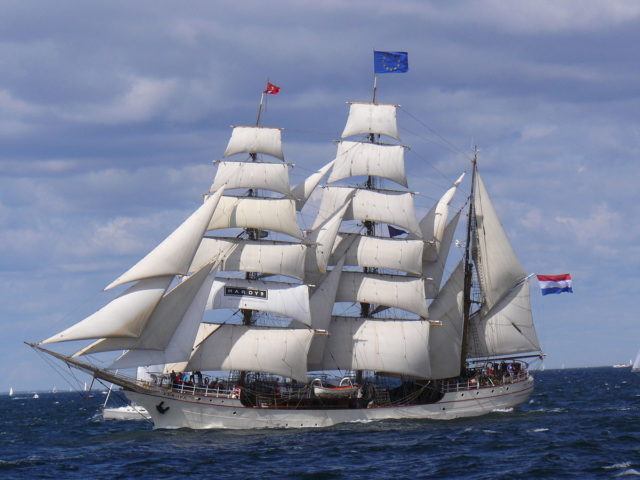
In 2013 and 2014, Europa was joined by two other Dutch tall ships, Tecla and Oosterschelde on a journey around the world.
#3 The Oosterschelde
Built in 1918, the Oosterschelde is the largest restored Dutch freight ship, as well as being the only Dutch three-masted topsail schooner left. This beauty has her home port in Rotterdam.
She was mostly used for transporting clay, stone, and wood, as well as food resources such as potatoes, straw, or bananas. During the 1930s, the vessel was improved with a better engine and in 1939 was sold to a Danish shipping company. Renamed the Fuglen II at that point, the ship became one of the most advanced ships in the Danish fleet.

In 1954, the vessel was purchased by a Swede and was renamed Sylvan. During this period, she was transformed into a modern-looking motorized coaster.
The Oosterschelde returned in Dutch ownership in 1988. In her native country, she underwent a careful restoration that lasted around two years.
Her last Dutch captain, Jan Kramer, as well as three maritime museums, collaborated together to make sure that the vessel is truly and authentically restored as it would have once been. In 1996, the vessel embarked on her first trip around the world, and then once again in between 2012 and 2014 along with Europa.
#4 Albatross (1989)
Albatros is considered to be the very last sailing ship that transported commercial cargo in Europe. She was built in the south of the Netherlands at the shipyard Capelle Aan den IJssel. What’s fascinating about this vessel is that during WWII she was used for smuggling Jews and political dissidents from Nazi-occupied Denmark to Sweden, which was neutral. On the return journeys, the vessel also smuggled weapons hidden in the cargo, to supply the Danish Resistance movement.
In the late 1990s, Albatros started to serve as a passenger ship. She was rebuilt and used by Greenpeace throughout this period and was used as a sailing classroom for an environmental educational program. Her home port today is Amsterdam.
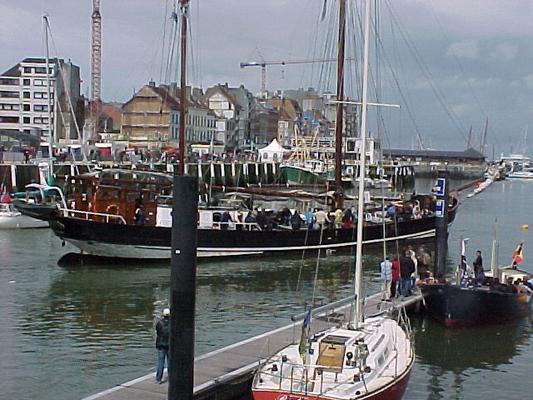
There is another Dutch ship that was called Albatross, a schooner built in 1920. Unfortunately, the schooner sank in 1961 with a group of American teenagers on board. Reportedly, the ship had sunk after a sudden violent squall. The events of the ship’s sinking inspired the 1996 film White Squall.
#5 Tradewind
Built in 1911 at the Dutch Capelle Aan de IJssel shipyard, the Tradewind was first called Sophie Theresia. At first, she operated as nothing more than a fishing vessel in the North Sea but in the late 1950s she was refitted as a cargo ship. She was used on various routes from the Netherlands to several other smaller North Sea ports.
The vessel got the name Tradewind only in the 1980s, after which came some of her best days on the open sea. In 1987, the Tradewind joined the First Fleet Re-enactment Voyage, a revival of the historic moment when a fleet of tall ships assembled in England and took off to Australia to colonize the distant continent.
The re-enactment journey to Australia began in May 1987. The fleet sailed via Tenerife, Rio de Janeiro, Cape Town, Mauritius, and Freemantle prior to arriving in Sydney on Australia Day (26 January 1988).
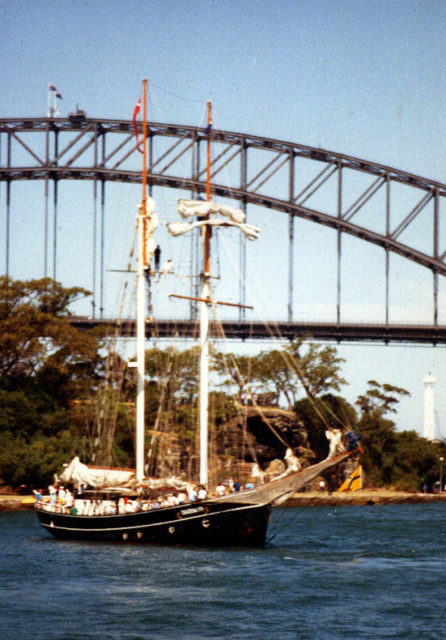
In late 1991, the vessel joined one more fleet of ships that sailed from Europe to America, this time to commemorate the 500th anniversary of Christopher Columbus’ arrival in the “New World”. The Tradewind went on to reach the Antarctic Peninsula and the Falkland Islands.
Read another story from us: The Ironclad Warships
The ownership of the vessel changed after these great voyages, and unfortunately, by 2003, the condition of the vessel was deteriorating. A serious renovation project of the Tradewind started in 2015 and the ship is expected to be ready to sail again sometime in 2017.
